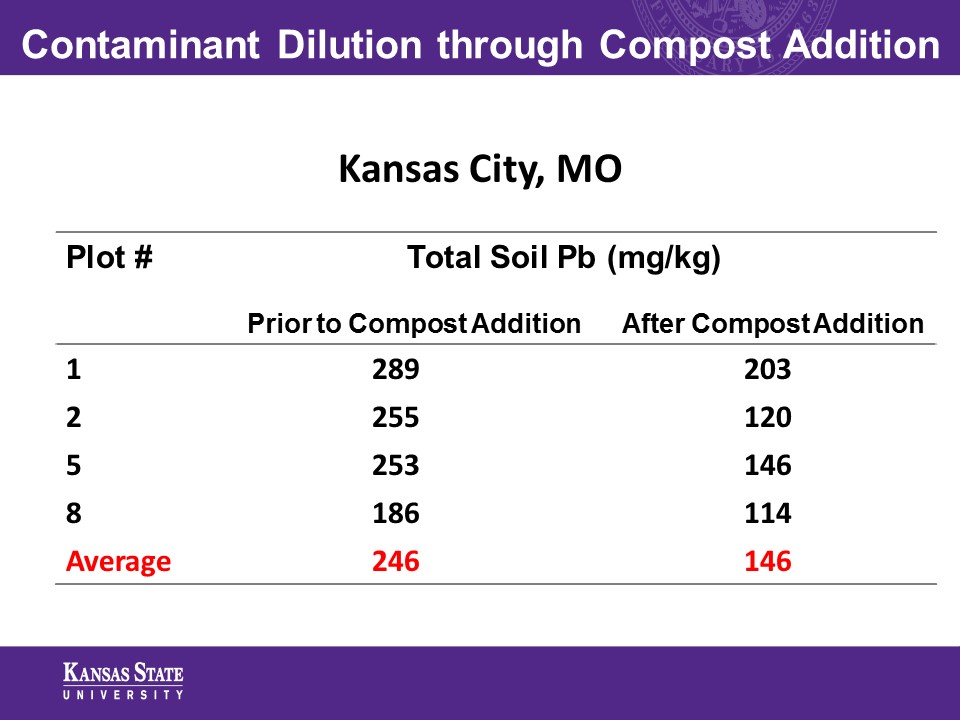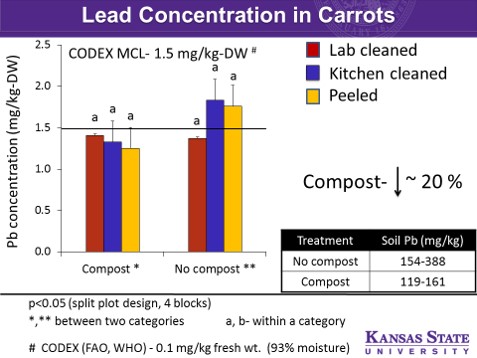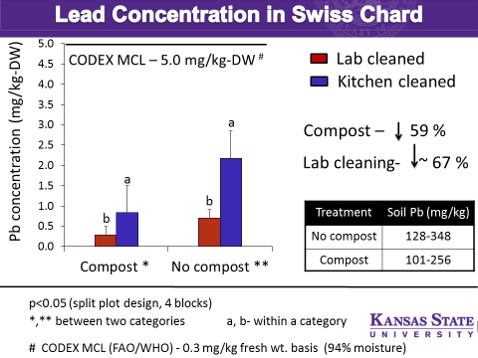Crop Uptake
From 2009 to 2014, we worked under an EPA grant to gather data regarding contaminant uptake by food crops grown on several brownfield sites slated for community gardens. Test sites were located in CA, WA, MO, PA, IN, OH, where test site soils exhibited lead (Pb) concentrations ranging from 100 mg/kg to 2,000 mg/kg, arsenic (As) concentrations ranging from 8 mg/kg to 162 mg/kg and total polycyclic aromatic hydrocarbon (PAH) concentrations of up to 50 mg/kg. Three vegetable crop types with three very different growth and contaminant uptake patterns were planted over two consecutive growing seasons, and soils and produce were analyzed throughout. Research results indicate the following:
- Concentrations of Pb, As, and PAHs in vegetables harvested at test sites were low, except for Pb in root crops, such as radish, carrot and beet. This indicates that the potential exposure pathway of concern is direct exposure of humans to contaminated soils, and that the pathway from contaminated soil to plant to human is insignificant.
- Preferential contaminant uptake by root crops as opposed to leafy and fruit crops was observed, especially for lead.
- Lead concentrations in root crops grown in sandy, moderately acidic soils with lead concentrations ranging from >200-250 mg/kg were above the World Health Organization/Food and Agriculture Organization of the United Nations (WHO/FAO) maximum level (ML) of 1 -1.5 mg/kg dry weight.
- Lead concentrations in root crop grown in non-sandy soils with+/- neutral pH and lead concentrations ranging from about 250 mg/kg to 400 mg/kg were below the WHO/FAO ML of 1 -1.5 mg/kg dry weight.
- Contaminants were consistently diluted by compost addition, thus reducing the potential risk of soil lead or arsenic transfer to humans through consumption of vegetables grown at these sites.
- Thorough cleaning of vegetables further reduced the potential of transferring soil contaminants to humans via vegetable consumption.
For more detailed information on soil lead transfer to crops see Field Evaluations on Soil Plant Transfer of Lead from an Urban Garden Soil.



Arsenic Concentrations in Carrots

Arsenic concentrations in carrots harvested at the Tacoma test site in 2010 and 2011 following three cleaning procedures (KC = kitchen cleaning; LC = laboratory cleaning; P = peeling). Vertical bars represent the mean of four replicates. Different letters within a category indicate a significant difference (α=0.05). Tagro is a locally available amendment in Tacoma, WA consisting of 50% class A biosolids, 25% sand. and 25% sawdust.
